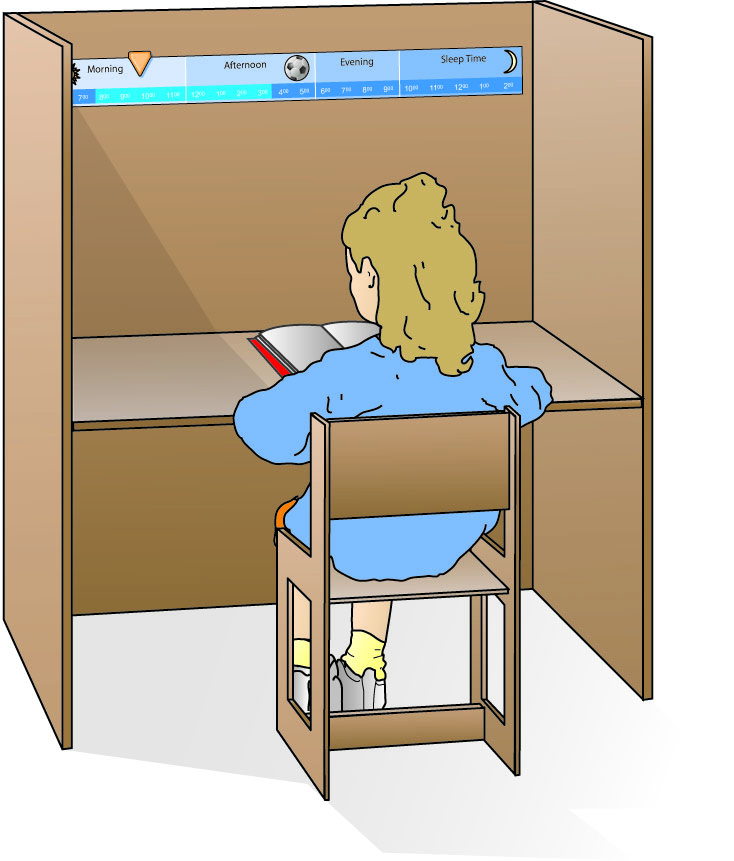The environmental setting always needs to be considered when an undesirable behavior occurs (see Chapter 4 – The Classroom).
Create a supportive classroom
- Provide a calm environment
- Minimize distractions

- Emphasize routine
- Behavioral expectations should reflect behavioral abilities
- Focus on assisting student rather than disciplining
- Provide a time out/study area away from the group
- Make sure the student feels safe
Use simple and brief communication
- Provide brief, clear information
- Give explicit instructions
- Check for understanding (verbally)
- Have student demonstrate understanding
Establish clear and simple rules
- Post the rules and the consequences
- Review the rules and the consequences
- Model the rules and review the consequences
- Rehearse the rules and review the consequences
- Follow the rules and consequences
The school psychologist or school counselor may be a good resource to help with social skills training.
Use social skills training
- Model appropriate behavior (role play; students may imitate observed behavior)
- Reward other classmates for their positive behavior
- Teach how to appropriately handle frustration and disappointment
- Teach how to get someone’s attention in an acceptable way
- Practice desired behavior
- Reinforce desired behavior
- Re-teach appropriate behavior
Teach self-talk
- Teach how to ask for help
- Teach how to consider good choices
- Teach how to remember rules
- Involve the student in discussing solutions to difficulties